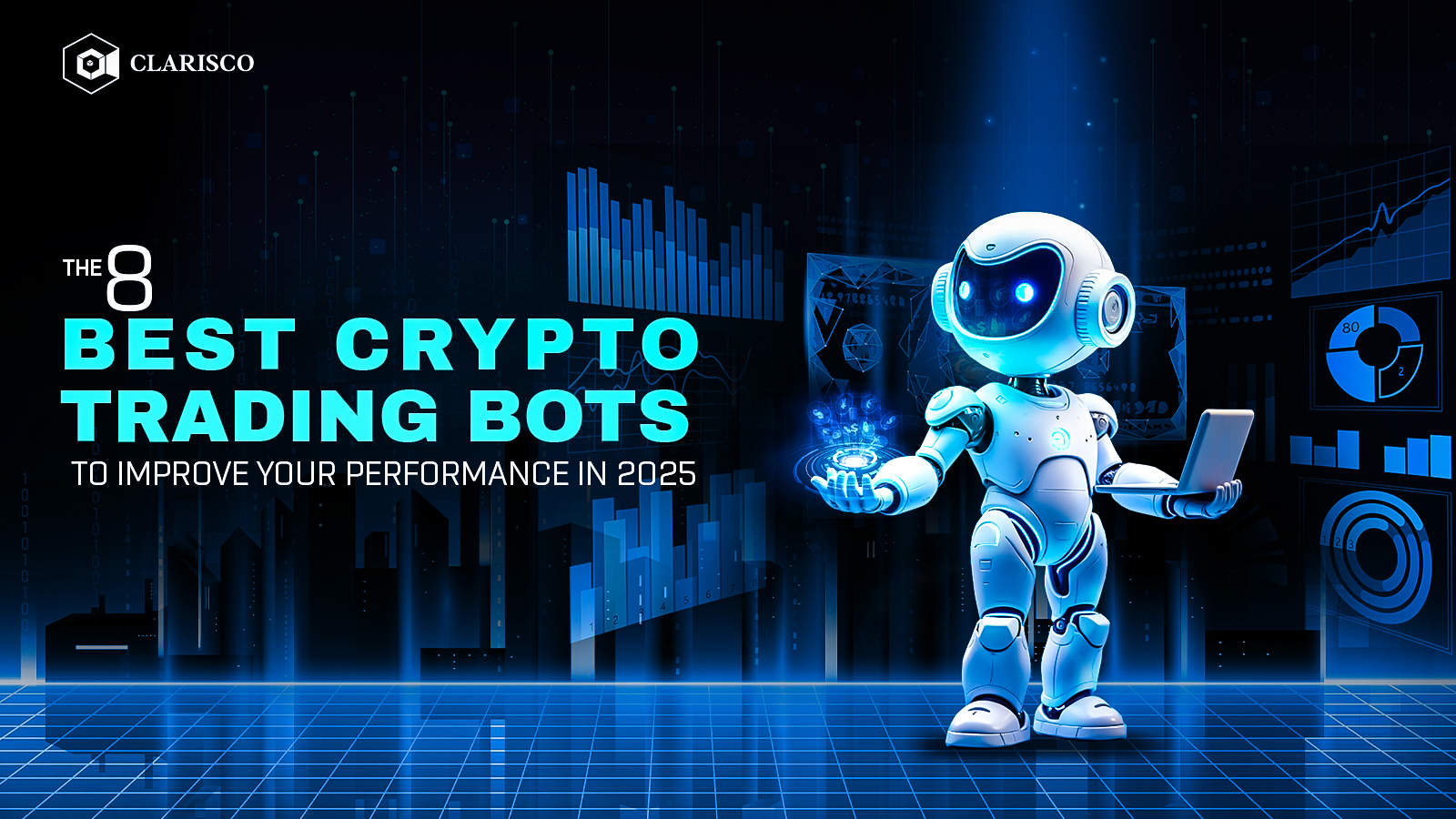
























































































































































































Clarisco requests your action to continue
The above mentioned products are used only for clear understanding. We don't have control of the brand and are not doing direct & indirect partnerships with them. We are also not doing promoting activities for them.
The cryptocurrency market leaps or falls by 10-20% or more in a single day as per the records over the years. As a human trader predicting the market, and making profits via trading bitcoin, and other cryptocurrencies is a tough task. Well, technologies have evolved with the market cap of the industry. The report from Coinmarketcap on Nov 2024, says the global crypto market cap is at $2.24T. While talking about technologies that have grown with the market has seen many upgrades like using AI, and other new strategies to make profitable trades.
By combining AI, and other strategies there are a lot of trading bots available right now in the market developed by a well-known crypto trading bot development company. As regulations get near, ETF approvals, crypto exchange licenses, and many experts think 2025 will get more inflows into the industry. In this blog, we will learn about the top 8 crypto trading bots, their strategies, how they work, and the future of bots in trading digital currencies.
It's a famous strategy when it comes to trading, which is a proven one. An Arbitrage Trading Bot makes money by buying and selling the same cryptocurrency on different exchanges. It works by profiting from small price differences between exchanges. The bot 24*7 watches prices across various exchanges. In a situation where it can buy a cryptocurrency cheaply on one platform and sell it at a higher price on another, the bot acts lightning-fast.
Example: Imagine Bitcoin is priced at $40,000 on Exchange A but $40,200 on Exchange B. The bot buys Bitcoin on Exchange A and then sells it immediately on Exchange B, making a $200 profit per Bitcoin. But, the traders must concentrate on the trading fees to increase their profits.
Before learning about what is it, let me explain the term 'Spread.' It's the difference between the buy (bid) and sell (ask) price of a cryptocurrency. A Market-Making Bot helps maintain a balanced flow of buy and sell orders for a cryptocurrency on an exchange. It does this by placing both buy and sell orders at slightly different prices to make a profit from the spread. This bot also helps keep the market stable by adding liquidity.
Example: If Bitcoin is trading around $30,000, the bot could set buy orders at $29,990 and sell orders at $30,010. If both orders are filled, the bot earns a small $20 profit from the spread. This strategy is suitable for stable markets, where the bot can earn small, consistent profits with low risk.
A Flash Loan Arbitrage Trading Bot uses special uncollateralized loans, called flash loans, in DeFi platforms. These loans don’t need any collateral and must be paid back within a single transaction. The bot scans for price differences across DeFi platforms and uses the flash loan to buy the asset on a cheaper platform and immediately sell it on a more expensive one. Smart contracts make the process low-risk for everyone involved in it.
Example: The bot detects that Ethereum (ETH) is priced differently on two DeFi platforms. It borrows money through a flash loan, buys ETH at a lower price, sells it at a higher price on another platform, repays the loan, and keeps the profit.
A Grid Trading Bot earns profits from price changes by setting up a grid of buy and sell orders within a certain price range. This bot is perfect for markets that don’t trend strongly in one direction but move up and down within a predictable range. The bot places multiple orders to buy when the price drops and sells when it rises, earning small profits each time.
Example: Imagine Ethereum is trading at around $1,500. The bot could create a grid with buy orders at $1,450, $1,475, and $1,500, and sell orders at $1,525, $1,550, and $1,575. As the price moves up and down within this range, the bot completes multiple trades, making a profit on each buy-sell pair.
AI Trading Bots use artificial intelligence to make better trading decisions. These bots analyze huge amounts of information, like historical price data, market trends, and even social media sentiment, to predict the best times to buy or sell. They learn from past data and adjust their strategy over time to make profitable trades.
Example: Let’s say the bot notices a pattern that Bitcoin prices often drop after a specific news event or signal. It learns to recognize this signal and starts shorting Bitcoin. By predicting this downward movement, the bot profits from the price drop.
A DCA Trading Bot is designed for investors who want to reduce risk by buying a cryptocurrency at regular intervals instead of all at once. By consistently buying a fixed amount, the bot averages out the purchase price, allowing the user to buy more when prices are low and less when prices are high. This strategy can reduce the effect of market volatility on the overall investment.
Example: The bot buys $100 worth of Bitcoin every week. Over time, it buys Bitcoin at a mix of high and low prices, which balances out the average cost. If prices drop, it can buy more units, and if prices rise, it buys fewer.
An MEV Bot looks for ways to increase profits by reorganizing or front-running transactions on blockchain platforms like Ethereum. This bot identifies transactions where it can get ahead, delay, or make a profit by adjusting its transaction order.
Example: If someone places a large order to buy a cryptocurrency on a decentralized exchange, the MEV bot might place a buy order just before them. This causes the price to go up, and then the bot can sell at a higher price, making a profit. These bots must be used carefully, as some techniques can raise ethical or regulatory issues.
A Triangular Arbitrage Bot makes money by trading between three different cryptocurrency pairs on a single exchange. This bot finds situations where three currencies have slightly mismatched prices and makes a sequence of trades in a "triangle" to end up with more than it started.
Example: The bot sees that on one exchange, there’s a small pricing mismatch between ETH/BTC, BTC/USDT, and USDT/ETH. It starts by buying ETH with BTC, selling ETH for USDT, and finally using USDT to buy BTC again. If all prices are favorable, it ends up with more BTC than it started with.
Done reading? What next? It's time to act. But wait, there is a main thing that needs to be done before implementing these bots to the live market, and that is ‘Backtesting.’ It will make sure that your bot is working properly according to your risk-management plans. So develop bots by an industry-leading crypto trading bot development company to avail these must-have capabilities. Still worried about the future of trading bots? According to a report, By 2029, the global AI crypto trading bot market is expected to have grown from its 2022 valuation of $21.69 million to $145.27 million.
Our trustworthy and happy Clients

200+

served Clients with a happy smile
Awards & Recognition
We are extremely pleased that reputable publications around the world recognised our superior work.




We'd Love To Hear From You!
Know your requirement, our technical expert will schedule a call and discuss your idea in detail. All information will be kept confidential.

Plot No. 29, 30, Iswarya Nagar,
Madakkulam, Tamil Nadu 625003, India
Business@clarisco.com +91 9442430551Monday-Saturday: 10am - 7pm
Sunday: Closed
